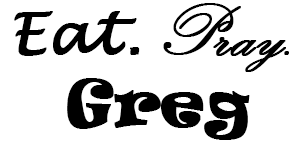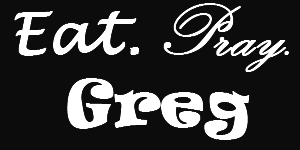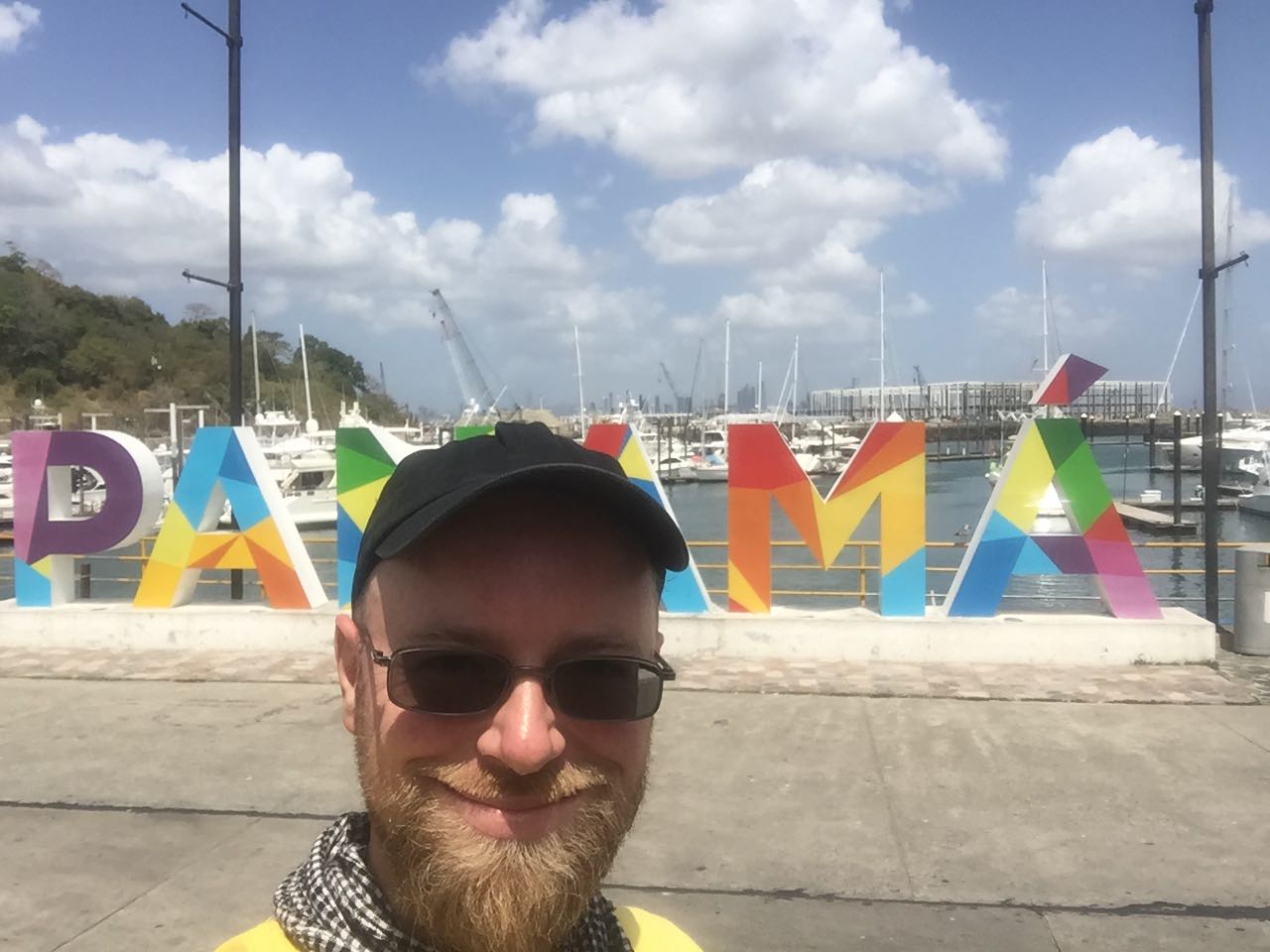I got up early, got a Didi and headed to the airport for my flight. I took the same road out and was able to take in one more breathtaking look at the Medellin panorama before the tunnel. I arrived at the airport soon after and was able to check in with no problem. To pass the time I read a few articles online, including one that discussed being a digital nomad in Medellin whilst I was being a digital nomad in Medellin. How meta.
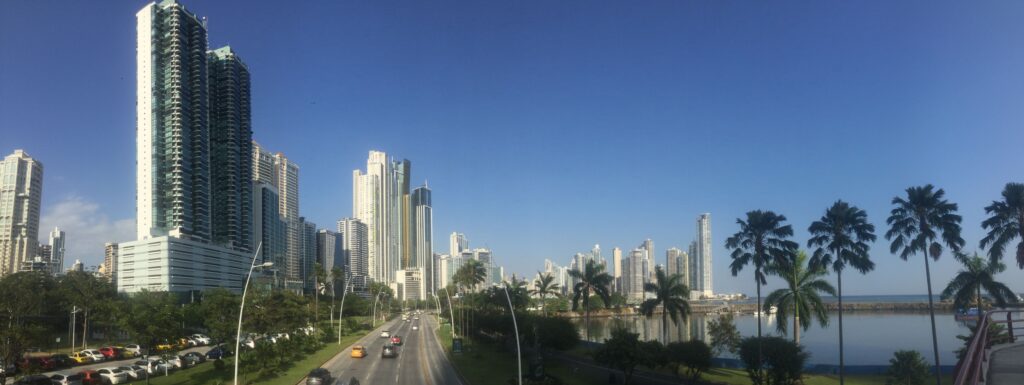
I got to my gate, and boarded my flight for a quick up and down to Panama City, Panama. It was not the same airport I had flown into before, but rather one out in the sticks. Still, it was crowded and I needed to wait about an hour and a half to clear customs. When I got through, I realized there was no free internet at the airport, ergo no Uber to town. I ended up going to a local coffee shop in the terminal, bought a tea, and got access to their wifi. I got an Uber and $6 later, I was at the hostel.
My hostel was a big step up from my place in Medellin. It was much homier and the people we a lot nicer (at least initially.) It was open and breezy with a patio deck and lounge area. I was shown my room, a four-topper, with Air Fucking Conditioning! Oh, how I missed the small creature comforts of life. Oddly, and not in a bad way, it appeared that I was in the Jewish Quarter of Panama City as there were a lot of synagogues about and men wearing Yakimas. The reason why this was odd was that during the rest of my time in Latin America, except for Argentina, I had not seen this. It was a very nice neighborhood and I felt very safe.
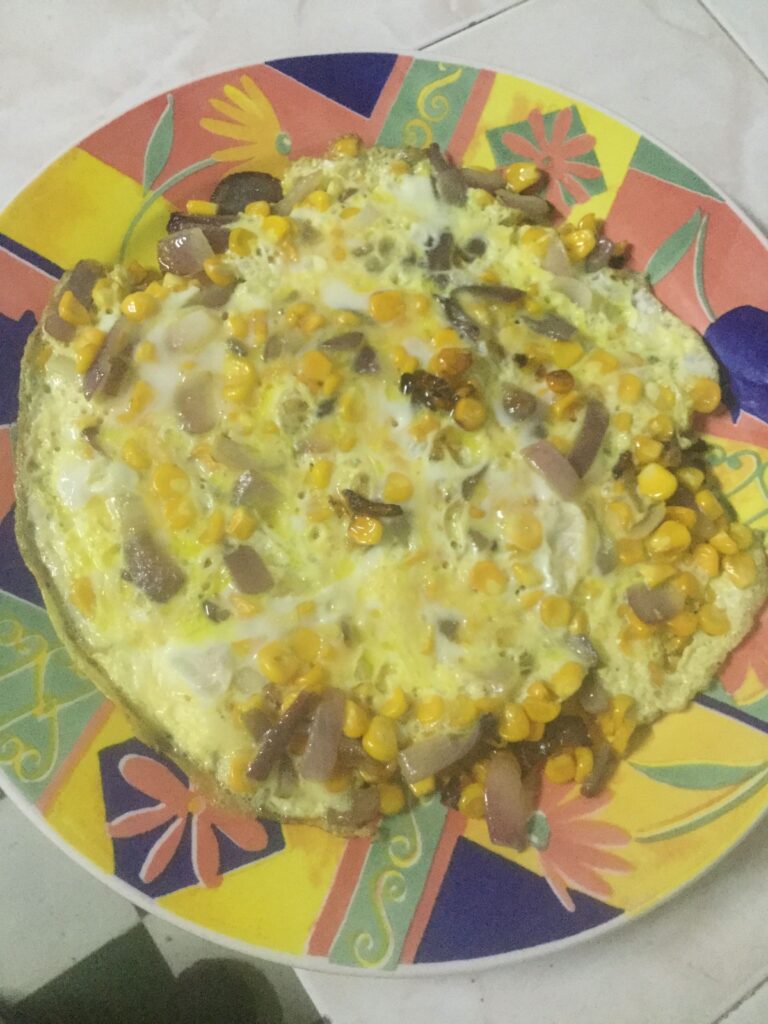
I headed to the local supermarket and got some supplies for my time here which basically consisted of eggs, rice, some fruit, and some veggies. For my late lunch, I created a new type of omelet that I called Huevos a la Inca while I was in Ecuador. It was basically a scrambled egg with corn. It was a nice complement to my Santiago Special.
After lunch, I headed down to what I deemed the Malecon, not being sure if that were its real name, which was simply a strand along the water. Looking back at the skyline of Panama City, I was very impressed. There were so many different types of skyscrapers. They even had a place that looked like a smaller version of the Burj Al Arab from Dubai.
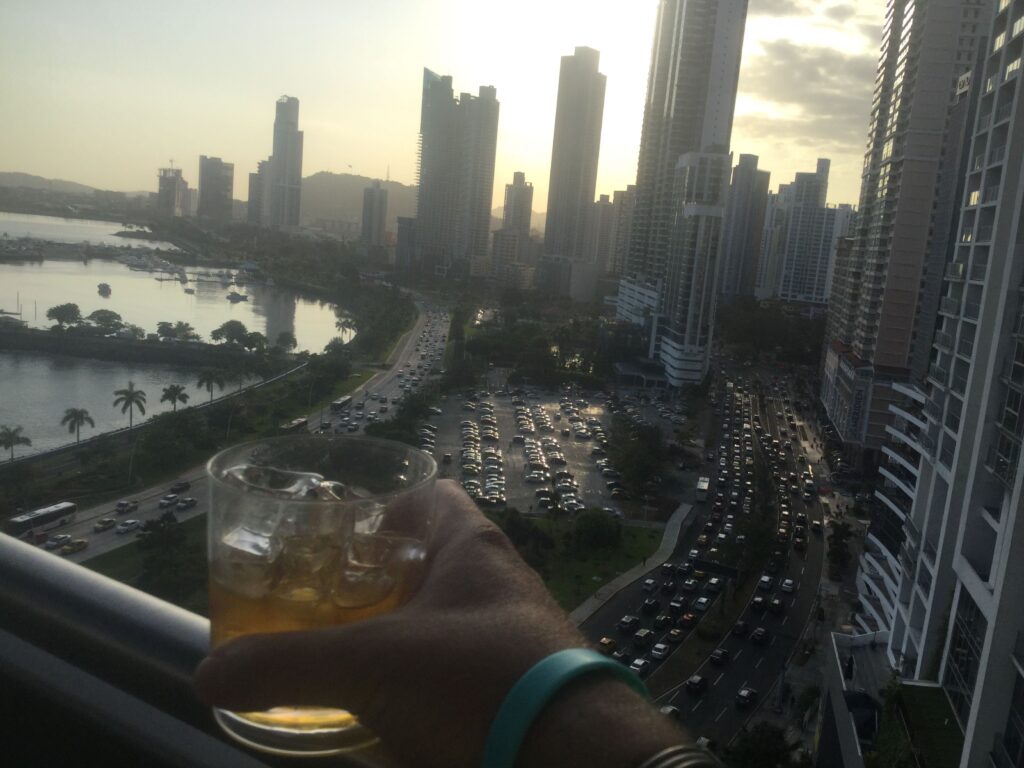
![]() After walking for a few hours, I entered a hotel and headed up to the rooftop bar. I ordered a drink and I was presented no bill. I looked around and realized that I had inadvertently crashed a corporate event of some American company. So I did what anyone would do in my position, milk it for all it was worth. I finished another drink, got a few appetizers that were being served by waiters on trays, made some idle chitchat with a few people, making sure to be funny but not too funny, then excused myself and disappeared. Not going to lie, it was pretty fun.
After walking for a few hours, I entered a hotel and headed up to the rooftop bar. I ordered a drink and I was presented no bill. I looked around and realized that I had inadvertently crashed a corporate event of some American company. So I did what anyone would do in my position, milk it for all it was worth. I finished another drink, got a few appetizers that were being served by waiters on trays, made some idle chitchat with a few people, making sure to be funny but not too funny, then excused myself and disappeared. Not going to lie, it was pretty fun.
On the way back to the hostel, I got some beef cubes for dinner and then got an update from A. I wound down by watching the film The Laundromat, which will become very pertinent very soon. I liked the film. I then took a cold shower and crawled into bed.
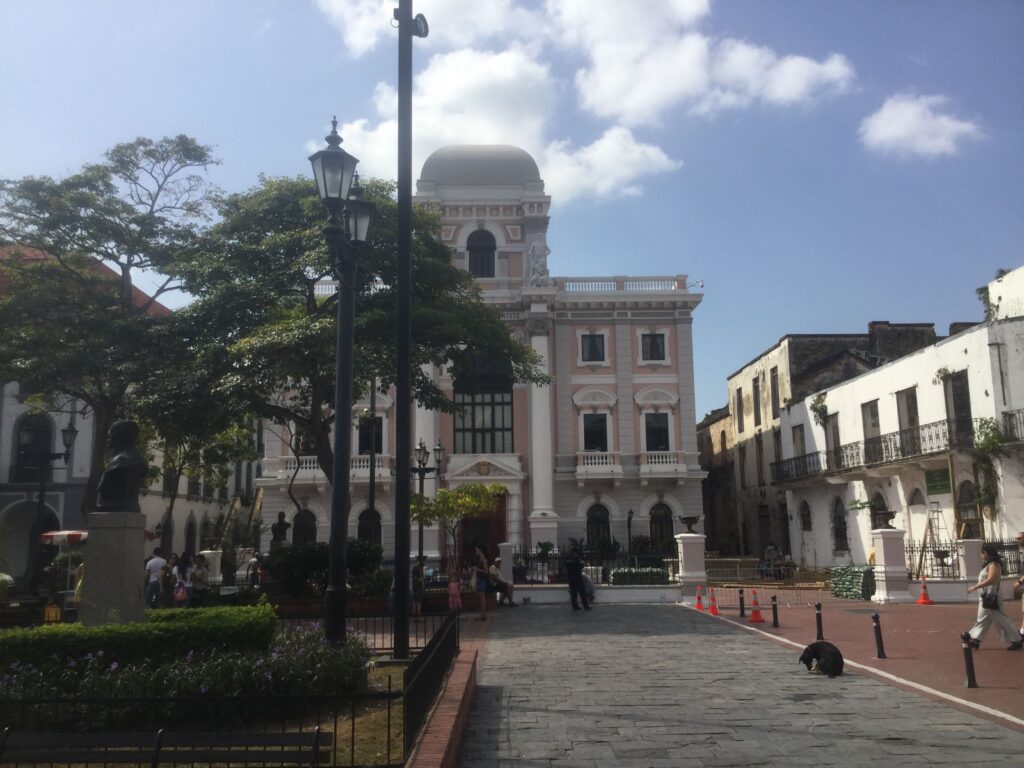
The next day, I woke up, had brekkie, then headed into Old Town for a walking tour. After a $2 Uber, I was in the Plaza de la Independencia. Looking around, I know work trucks when I see them, given my time in Hollywood. I asked what was going on and some of the nice crew guys told me, after I informed them we were paisan in the business in New Orleans, they were filming a sequel to Suicide Squad. Unfortunately, Margot Robbie was nowhere in sight.
I met my guide and again, in rapid-fire succession, I learned many things about this interesting country and city. The first of which is that it was promptly destroyed in 1671.
After the spectacular failure of the Spanish Armada’s attempt to invade England in 1588, Gran Britania began taking sites on Spain’s colonies. It was also a common practice at this time to shanghai young men on the island and sell them into indentured servitude in their own colonies in the Caribbean. One such unfortunate soul was Henry Morgan. After his servitude was complete after seven years, he was left in Barbados penniless and without a way home. Luckily for him, he was not alone, as they were countless other desperate men. This is when Henry Morgan became a pirate. Rising through the ranks with his rough and tumble crew, they were able to scrape enough money together to buy a ship and Morgan was made the captain. He also made a good impression on his patron, the dutchman Captain Edward Mansvelt. Learning everything he could from Mansvelt, Morgan became a force to be reckoned with in his own right. After years of successful campaigns, Morgan would set his sites on Panama itself. On January 18th, 1671 after days of fighting, he and his band of pirates sacked Panama City and burned it to the ground. For his exploits, he became memoriazed in libation form. Yes, that Captain Morgan.
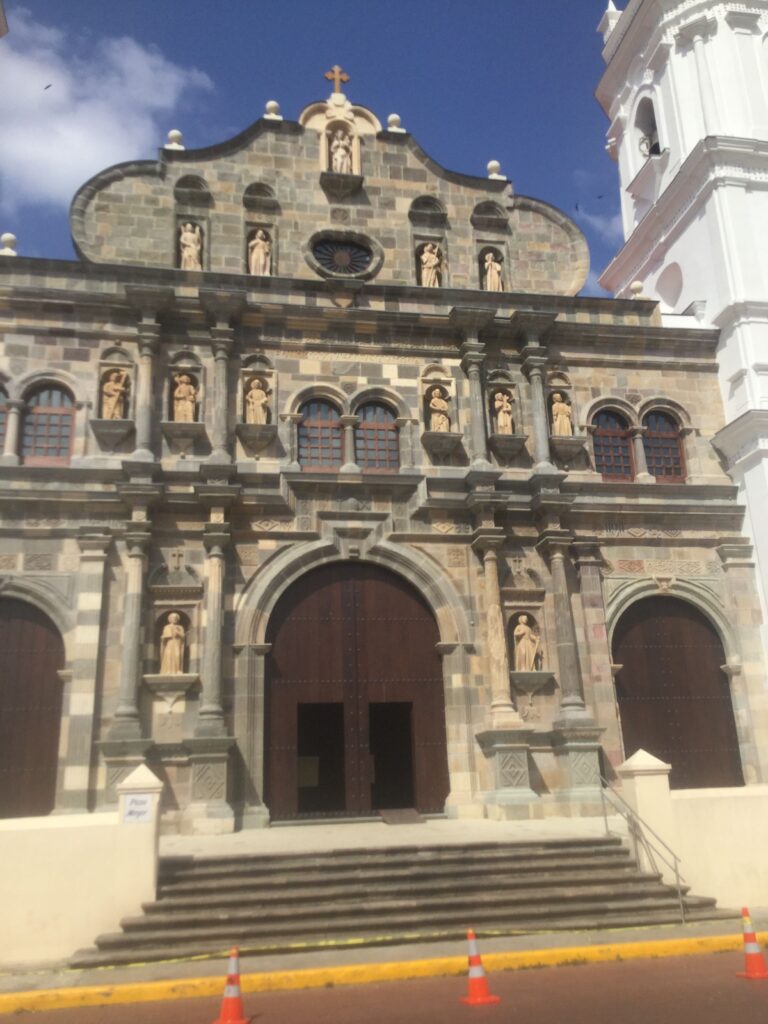
Next, I learned that after being part of Gran Colombia since its independence from the Spanish, Panama decided to join the sphere of influence of the United States. It formally declared so in 1903 on the steps of the main cathedral. Theodore “Teddy” Roosevelt seemed to hypocritically circumvent the Monroe Doctrine, that states European colonialism would not be tolerated in the Western Hemisphere, Roosevelt made his own corollary. It stated that The United States would give no cause for European intervention in the hemisphere by becoming the de facto police force of it. Soon, Panama and the United States signed the Hay Bunau Varilla Treaty that offered protection to the new country of Panama for the right to build a canal. Since the War of 1898 against Spain yielded the territories of Guam, Puerto Rico, and the Philipines to the United States, Roosevelt recognized the awesome power of Naval force. He wanted a protected route for his navy from the Atlantic to the Pacific as well as secure lines of commerce. The US tried negotiating with the government of Nicaragua for the ability to build a canal first, but there were too many issues.
However, the French had already started on the construction project years earlier with Ferdinand Lasep, the same gentleman that built the Suez Canal in Egypt. However, Egypt was a very different climate than that of the sweltering jungles of Panama. With inspects, venomous snakes, and disease, the project was all but canceled. The United States picked up the mantle and by 1914, it was completed. As such, Panama has no standing army, although it has significant security obligations with the canal. But much more on that later.
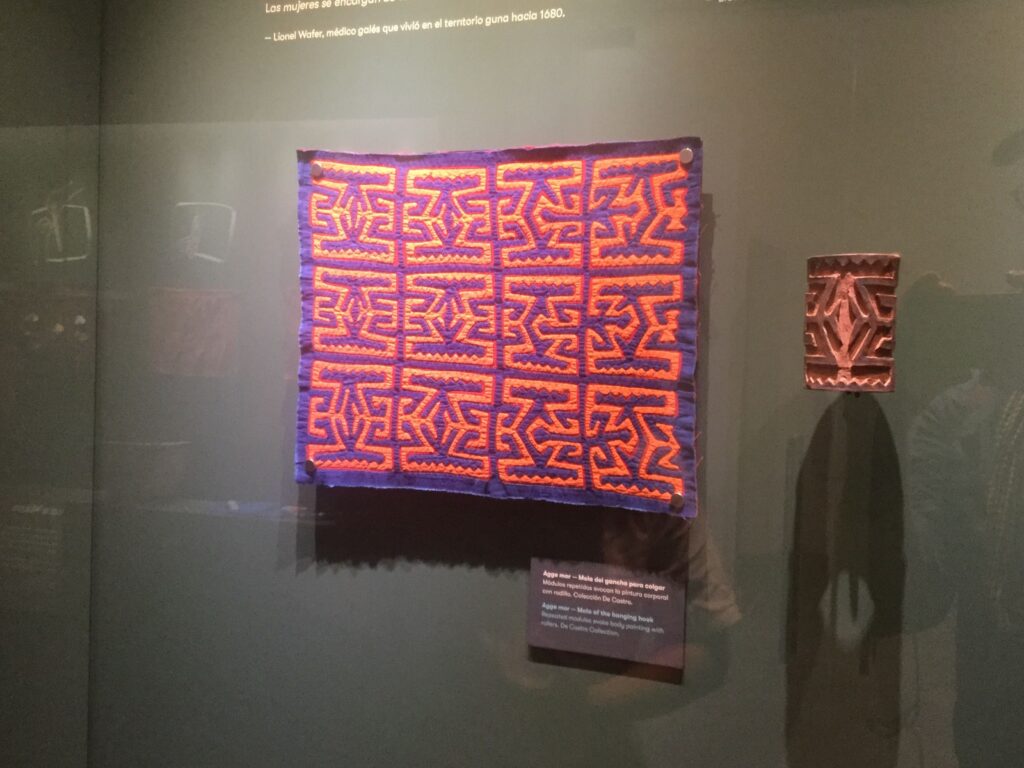
The final stop on the tour was the Mola Museum about indigenous Panamanian fashion which, admittedly, I thought was going to be mind-numbingly boring. How wrong I was. The natives of Panama, the Guna, given its sweltering climate seldom wore clothes. They were also people that believed in both evil and good spirits. To confuse the evil spirits from entering their bodies in the form of sickness or harming children in utero, both men and women tattooed incredibly intricate and beautiful geometric designs all over themselves. When the Spanish showed up, of course, they demanded these heathens cover their nakedness. However, still wanting to keep the evil spirits away, they began putting these geometric designs on their clothing. They were utterly amazing, intricate, and beautiful. Another thing I learned was that noserings on native women meant they were married.
I thanked my guide and after the tour, I found a restaurant and ordered a whole grilled fish for lunch. Flipping through my phone, I saw a story that some deranged former military soldier walked into Terminal 21 in Bangkok and open fired, killing 21 people. While I hate to say that I was used to reading this news in the United States, it was very different reading about it in Thailand. I got back on Bumble and contacted Penny, the young lady I met with there to see if she were OK. She got back to me right away saying that she was fine and thanked me very much for checking in on her.
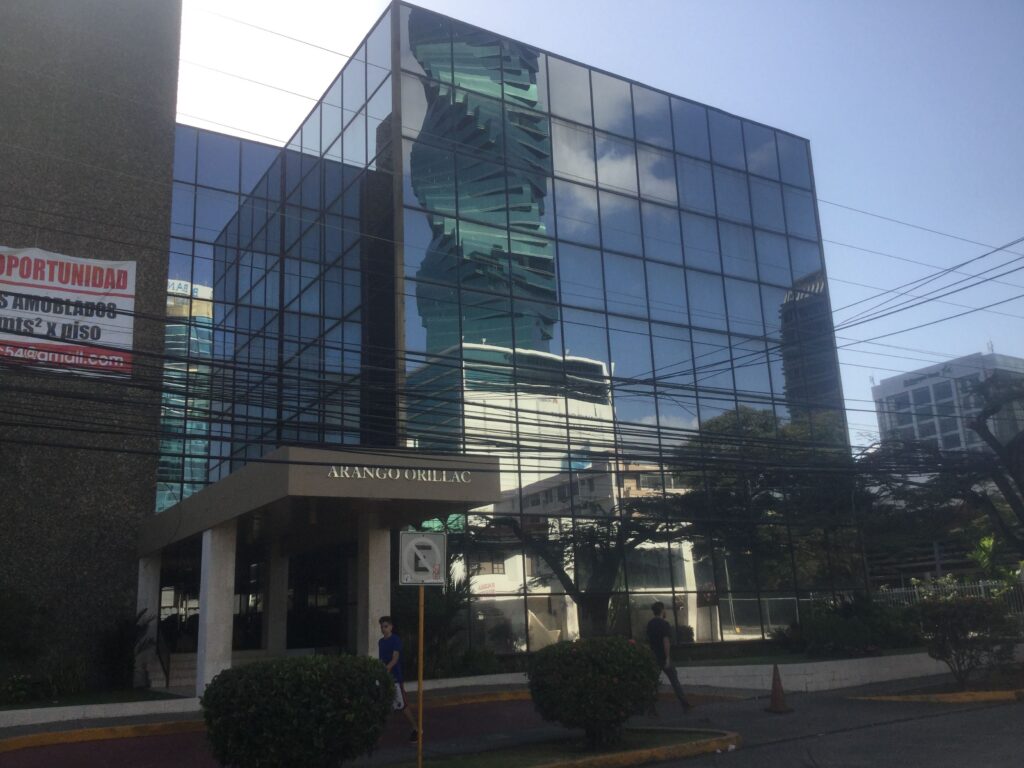
After lunch, I headed back to the hostel to rest up a little and began laying the groundwork for my blog. Afterward, because it was fortuitously close by, I headed to the former offices of Grupo MF or Mossack Fonesca (with a large For Rent sign out front.) My viewing of The Laundromat was not a coincidence. On April 3rd, 2016, a collection of private memos, tax records, and communiques began being published from not only the well-to-do of the Spanish-speaking world such as the famous director Pedro Almodovar and Shakira, but 11.5 million other documents implicating people around the world of fraud, tax evasion, and violating international sanctions. These off-shore services were provided by the law firm and corporate services company of whose offices I was standing in front. Possibly the most notable (and ironic) thing about the building was that it was a cube of one-way glass; they could see out, but no one could see in.
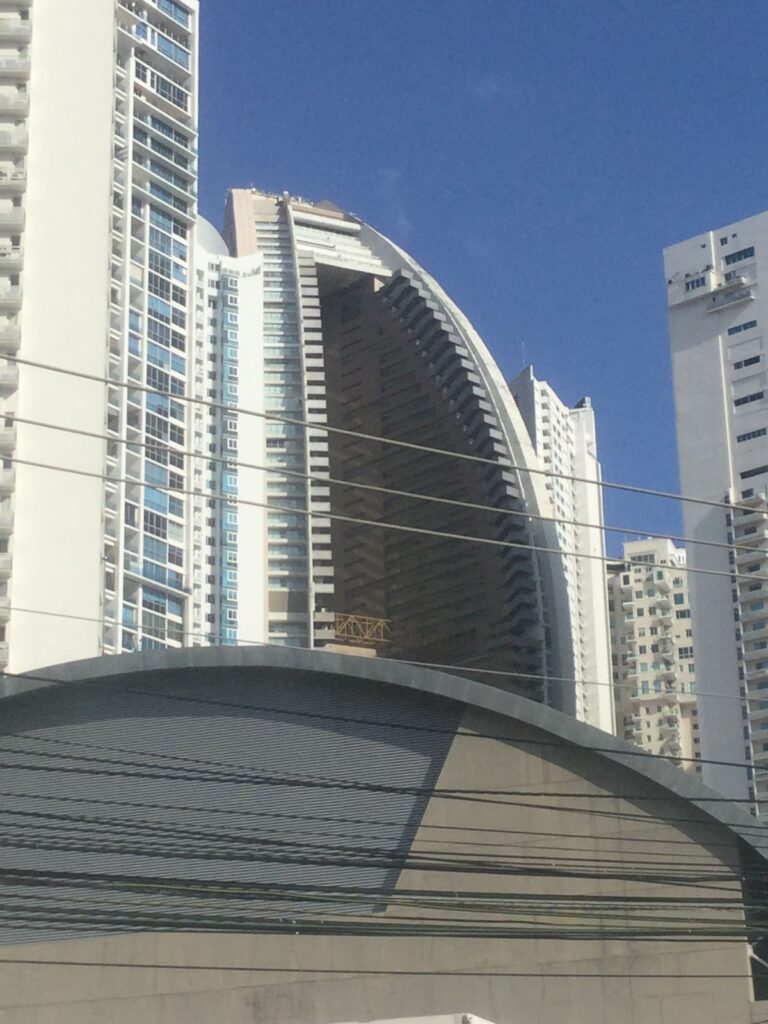
My personal walking tour continued to the Burj Al Arab-esque building that I would soon find out was the JW Marriott of Panama. Again, fully utilizing my white privilege, I finagled my way to the guest-only pool area and had a seat. Looking around at the beautiful sunbathers sitting by an infinity pool and glancing out onto the ocean with a glass of Fernet in my hand, I felt both privileged and astounded I had made it so far on my world journey. The only question would be, what will my life be like when I return home?
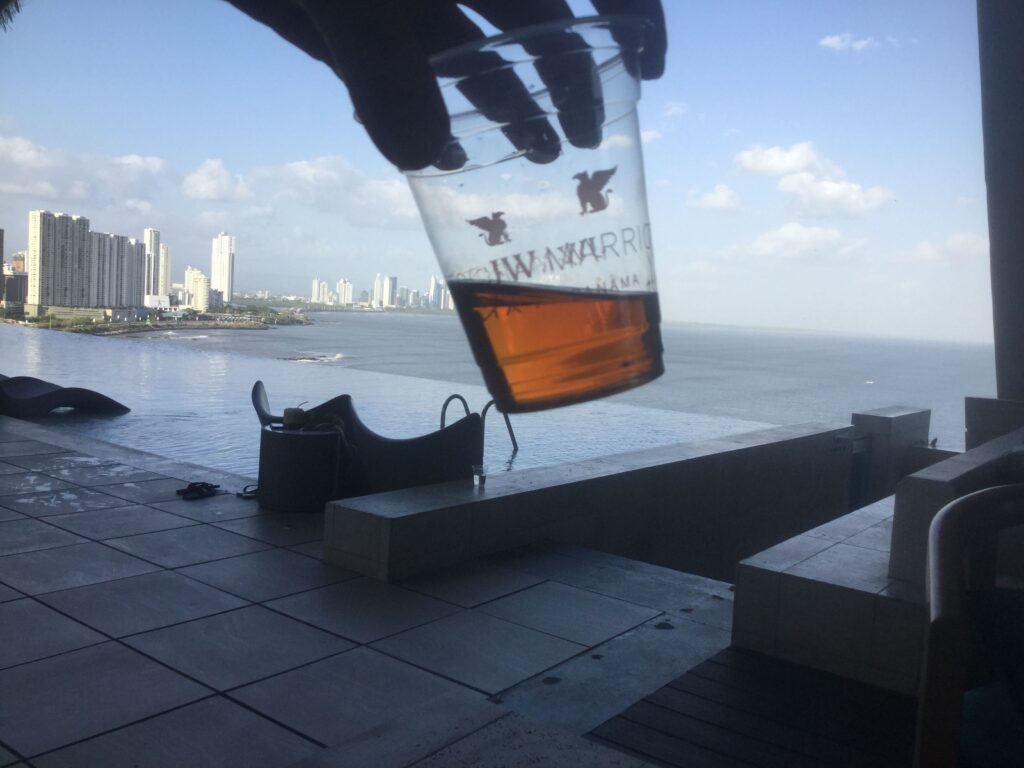
After pondering the existential for a bit, I realized it was time to head back. I took an Uber to the hostel, made some dinner, and then went to bed.
The next day, I woke up and got ready for my tour of both the canals and the city. My van pulled up and I jumped in with a few other tourists. We were on our way in the busy Panama City morning. As we drove, our guide, in typical rapid-fire succession, gave us many facts about everything Panama.
The few facts about the city that stood out to me were that in a city of 1.6 million people, the main revenue besides obviously the canal was tourism, construction, and banking. Not surprisingly given the intertwining of government interests, the dollar is the national hard currency of Panama. While they do print their own coins, known as Balboas for the explorer, everything was priced in dollars.
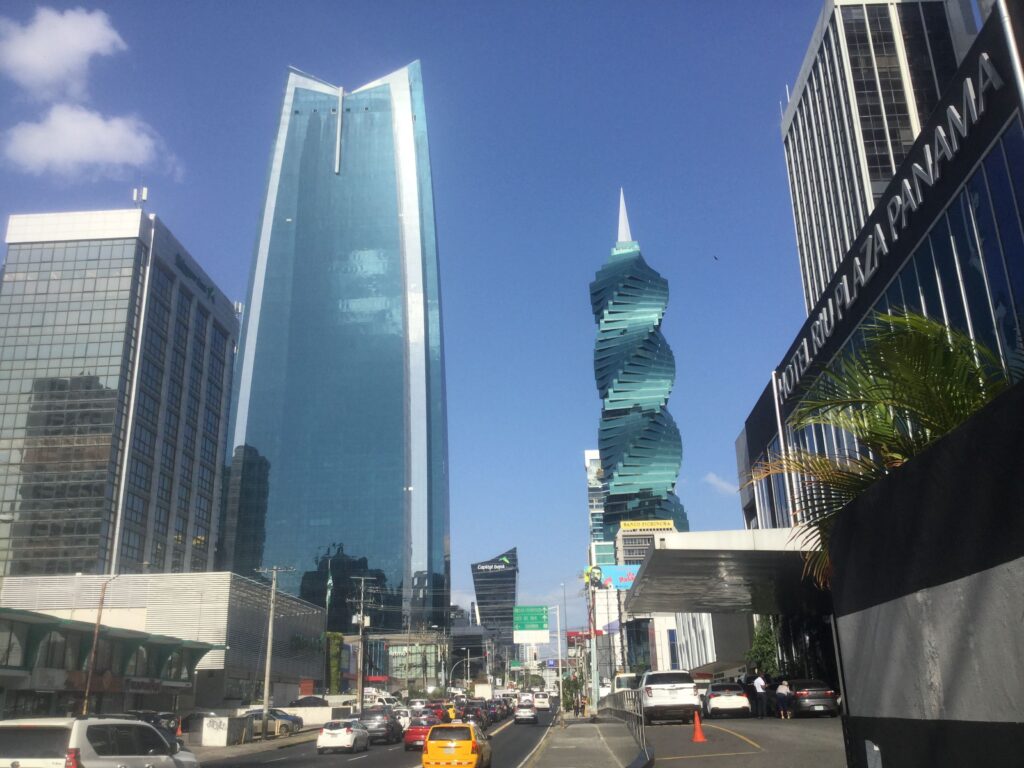
On the construction front, Panama City had 12 of the tallest buildings located in Latin America. Our guide shared with us an incredibly easy way to tell what kind of building was going up. If there were balconies, they would be apartments. If it was just glass, then they would be offices.
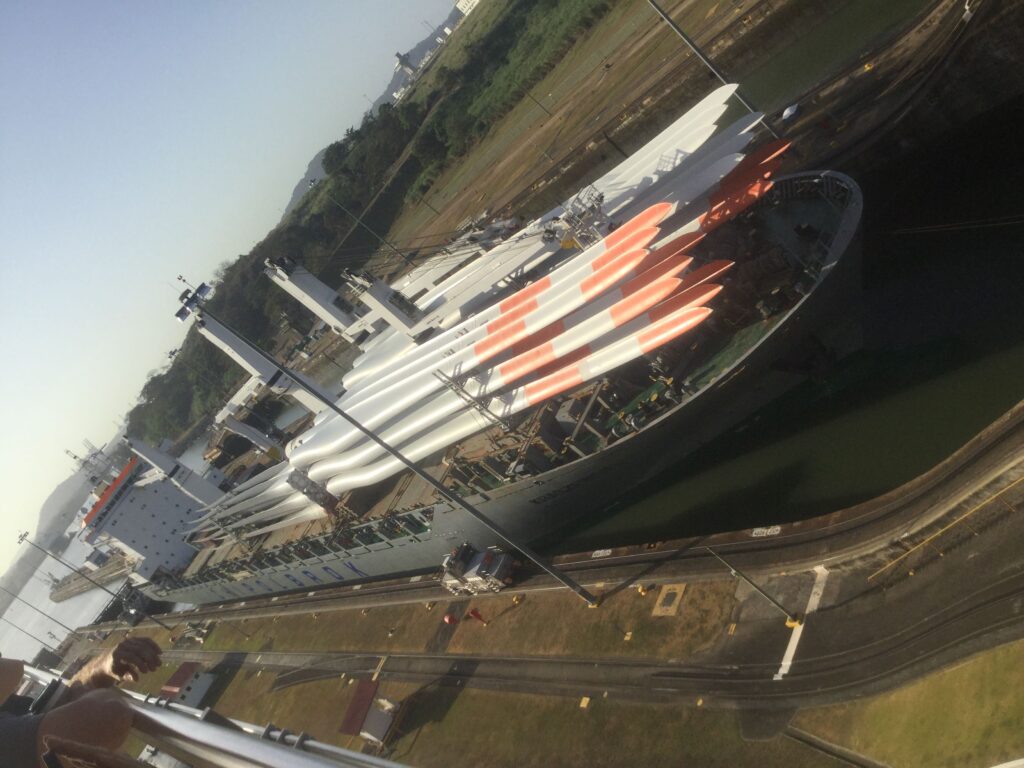
We then made our way to the Miraflores Canal. It was started in 1851 by the French as was mentioned before. It was finally completed by the Americans in 1914 with the installation of the Pittsburgh, PA-made locks, each weighing 700 tons. The locks were needed to increase the water levels as they did not want to dredge the entire 50 miles of the canal.
When traversing the canal, one must make payments in dollars. This might not seem like a big deal until you realize that some cargo ships depending on the size and freight need to fork over hundreds of thousands of dollars, a lot of the time in cash. The Panama Canal Authority gets 51% of the take while the government of Panama gets 49%. Estimates for the amount of world trade that goes through the canal are 3.5% to 7% per anum. Each boat needs its own canal-trained pilot and with roughly 38 ships a day going to and fro, the canal makes between $14-$17 million daily.
The canal had an observation deck on which we all stood and looked at the ships going through. It was pretty amazing to see these great big cargo ships go into a lock, watch them slowly rise, then continue on their way. One of the ships was transporting wind turbine blades, probably from China on their way to Europe.
However, one of the more silently terrifying things was in a little bit of the distance. The canal I was standing in front of was of American design. After 74 years of use, the United States under Jimmy Carter gave control of the canal back to Panama in 1978 with the Carter Torrijos Treaty. The American “lease” of the canal terminated in 1999. The next big “improvement” to it was due to the Chinese construction around the periphery of the canal, no doubt by using their soft power “belt and road initiatives.” I thought of this while I watched a supercargo ship filled with anything from TVs to cars slowly but surely going East to West.
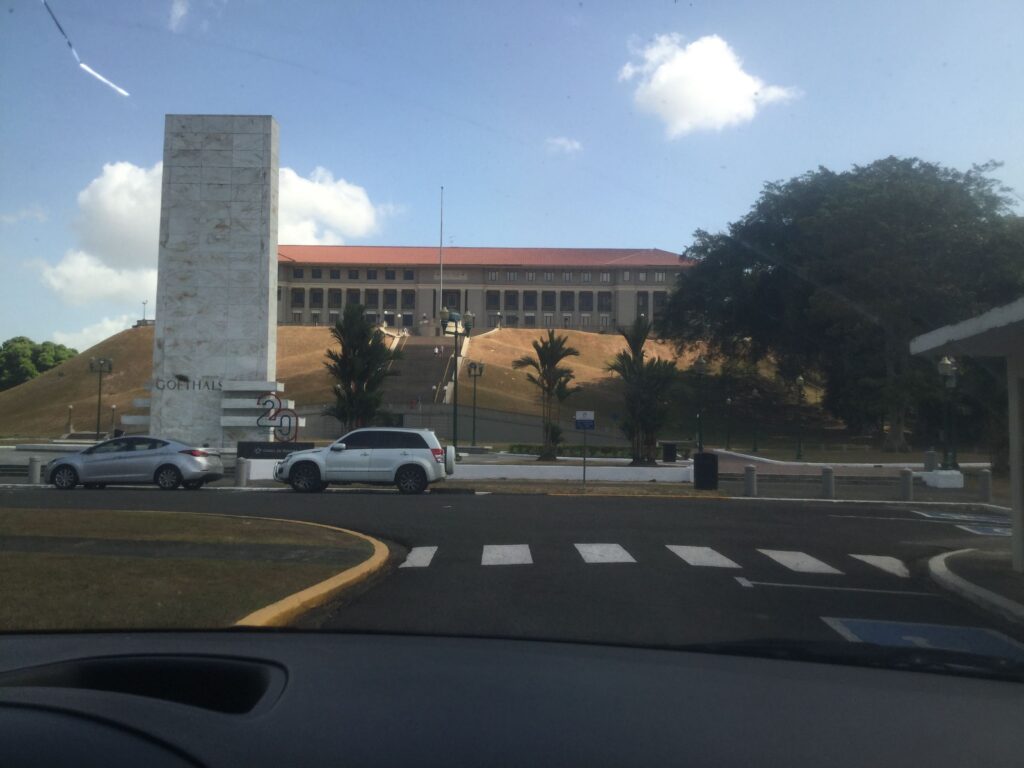
After the Canal, we were shown the barracks that the American military had in order to safeguard the canal. I came to realize that this is where John McCain, his father being an Admiral, was born. The complex was expansive.
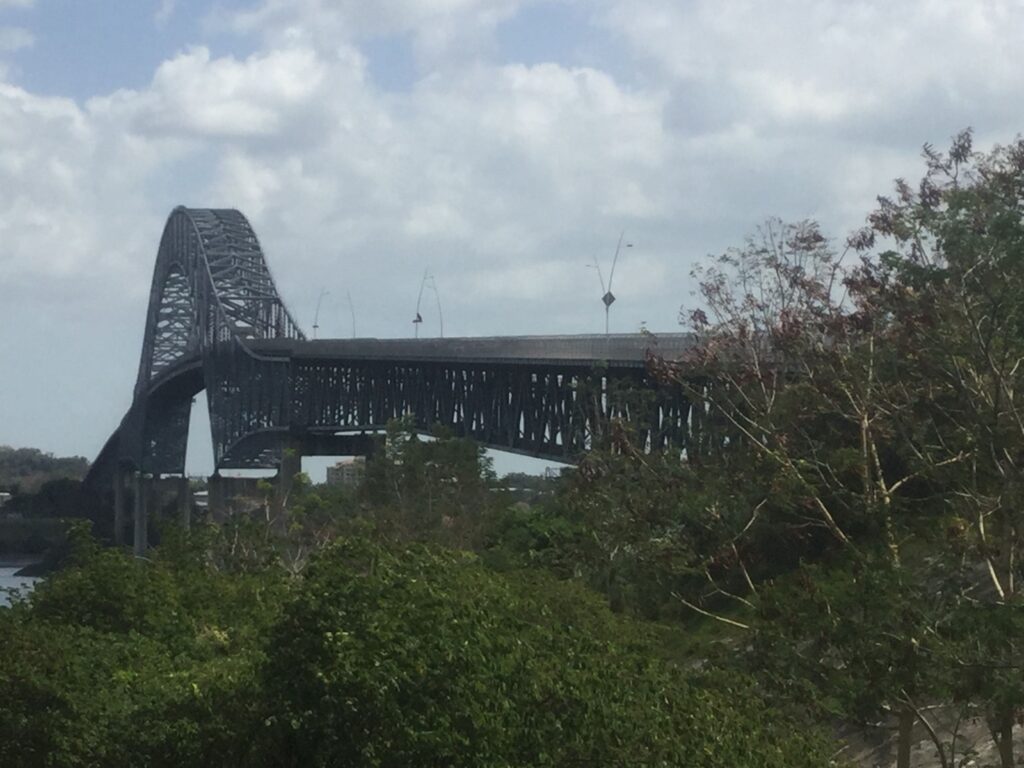
Our next stop was traversing the Bridge of the Americas. Completed in 1962, this bridge staddled the pacific inlet of the canal. It also connected the two landmasses of North and South America. However, one cannot drive from Ushuaia, Argentina to Utqiagvik, Alaska (God, that would be sweet though.) The reason for this is that the Panamanian jungle is as unforgiving as it was during the era when the canal was built and there have been no real reasons to make a roadway.
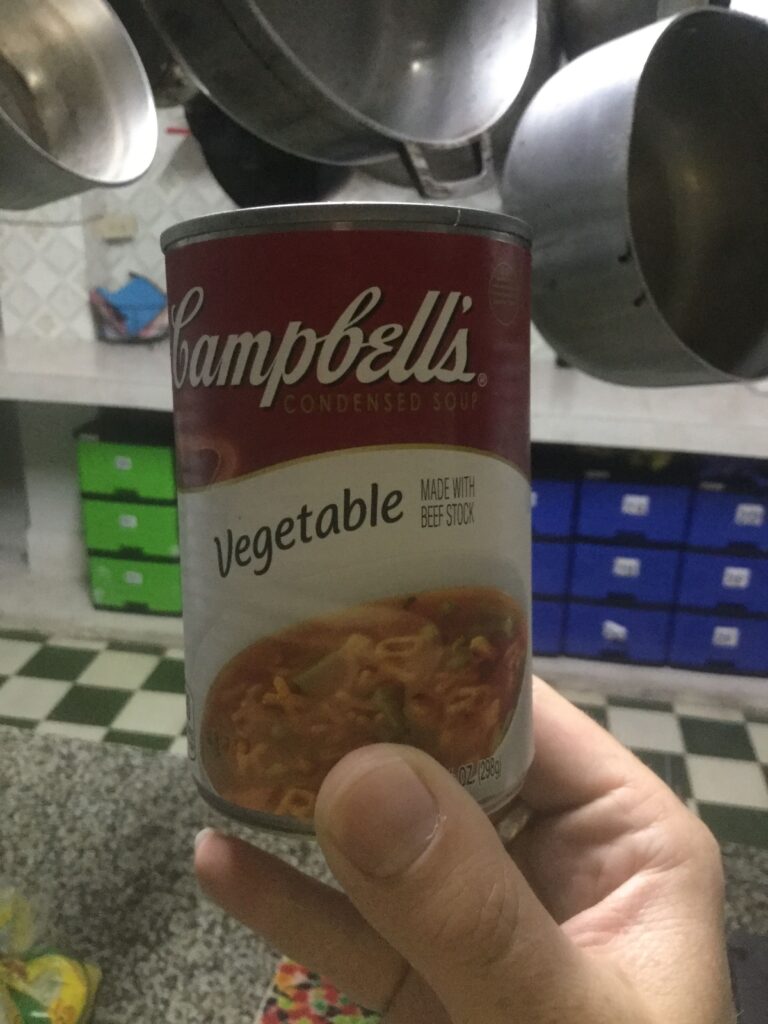
After stopping at the prerequisite souvenir trap, we headed home. I was one of the last people to be dropped off, which was fine. I learned a lot. I called A before she headed back to the freezer and told her about my day. I went to the store and got some more things for dinner including a can of actual Campbell’s soup, something I had not seen for almost a year. I made it with rice and tuna while dancing in the kitchen, then abruptly realized I was not alone. After some fleeting embarrassment, I headed to my room, watched some No Reservations to get some food intel on Panama, then went to sleep.
The next day, I got an email from FedEx telling me that my card had arrived. They tried delivering it right to the hostel, but for some reason, no one was there to accept it. So, I had to go to the shipping center to retrieve it. I decided to walk because it did not seem that far away.
It was about a 30 min walk, but the temperature was already in the 80s by 9 AM. I found my way to an industrial park and kept wandering around looking for the FedEx logo. I finally found it, tucked into a bunch of other depots. I went in, presented my ID and passport, signed the receipt, and had my debit card back. I was very thankful as the ATM fees with my other card were murder. Subsequently, my bank would pay them all for me.
I did not want to walk back but was in a quandary as I needed to find a place with internet so that I could get an Uber home. I walked over to a gas station holding my phone over my head looking for a signal. Out of the corner of my eye, I saw an armored car pull up. Two rough-looking men jumped out in bulletproof vests with one wielding a shotgun. He looked at me with a scowl and I looked at him with a quizzical look on my face. I took this time to walk to the other side of the street. I found a signal and called an Uber back to the hostel. These guys were making a pick up at the gas station I was standing in.
I got back, talked to some clients, then having thoroughly cooled down, I went back out into the late Panamanian morning. I had another site to see.
When one thinks of Panama who is my age or older, one name comes to mind: Noriega. Manuel Antonio Noriega Moreno came from a poor family. However, he showed promise and was invited to study at the Chorillos Military School in Lima, Peru. In an effort to keep the Reds at bay in Latin America, in 1946 the United States set up a special school to teach the up-and-coming of Latin America’s military the ways of American warfare. This was called the School of the Americas. They would have many graduates, including those who assisted with Operation Condor. Noriega was invited to attend the school. He rose through the ranks of the Panamanian military and became allied with the soon-to-be dictator Omar Torrijos. In 1968, Torrijos lead a coup that brought him to power with Noriega being the head of military intelligence. This was very easy for him as he had been taught and was working with American intelligence agencies since the 1950s. When Torrijos died in 1981, Noriega consolidated his power and became the de facto dictator of Panama. This would have been fine with the US, except old Pineapple Face (Noriega’s nickname due to his pox marks) became very greedy and began working with the narcos down south. The United States was not happy and in 1988, he was indicted by grand juries in Tampa and Miami for racketeering, money laundering, and drug smuggling. It also did not help that he was sharing intelligence with multiple governments, not just the United States. Enough was enough, so in 1989, George H. W. Bush invaded Panama, sending Noriega into hiding. His last spot where he lost hide and seek was where I was going.
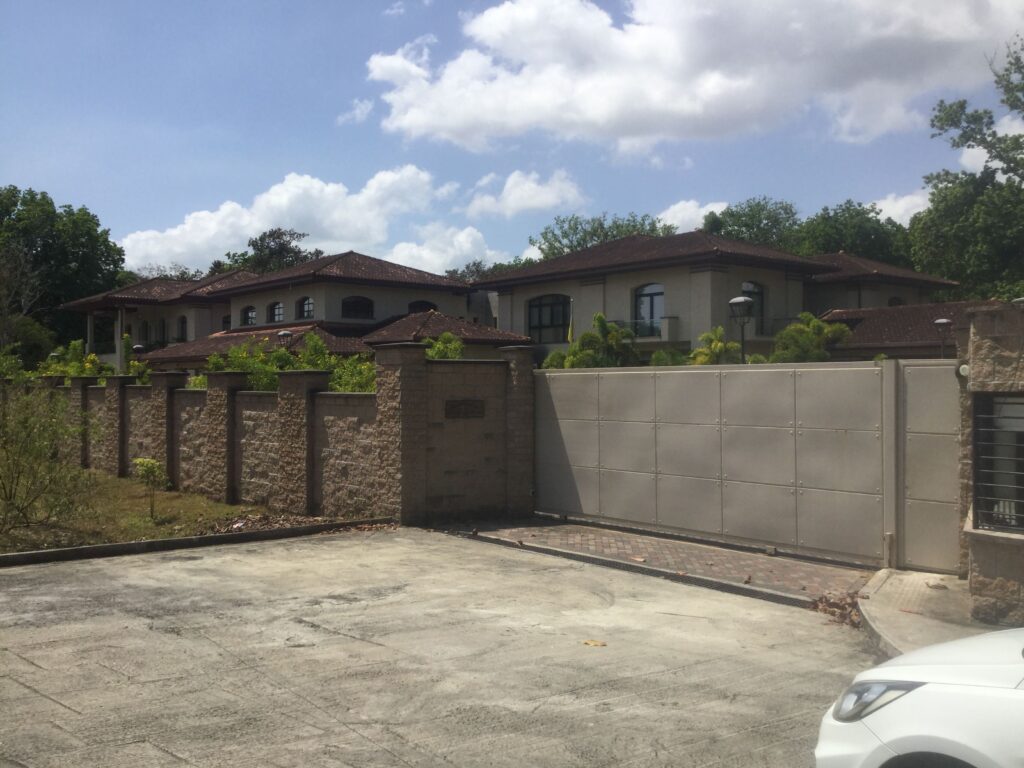
Much like how other countries of the world have Embassies, so does the Vatican. With few other places to turn, Noriega asked for refuge in the Holy See of Panama. I hired an Uber to take me to the outskirts of Panama where it was located. I remember hearing stories of how the United States surrounded the compound and blared Van Halen (I can only imagine this particular song) until Noriega peacefully was taken into custody.
I asked my driver if he remembered those times and he said he did but did not provide further detail. I also him to stay as I would be quick and he agreed. I jumped out of the car, took in the site, then walked over to the plaque signifying that this was indeed the Holy See of Panama. I did not see the security guard, however, hand on his gun coming toward me. He asked me what I was doing. I said that I was taking a picture of the outside of the Holy See. He walked over to me and quite adamantly demanded that I delete the pictures. I have found in my young life that it is best to do what people with guns say (to a point,) especially if I do not have one of my own. Knowing that I could resurrect my pictures from deletion, I brought the guard in close to show him that I was complying with his instructions. He could tell I was not a threat and then offered to call the Monsignor and ask permission for me to take pictures of the outside. I thanked him. As I waited, I looked at my driver that still had the meter running, and shrugged my shoulders. The guard came back and told me that it was OK. Apparently, a few weeks earlier, a journalist without permission flew a drone into the compound. This would not have been so bad except the American Embassy shared a wall. The journalist was subsequently jailed. I thanked the guard, shook his hand, then GTFO’ed; International incident averted.
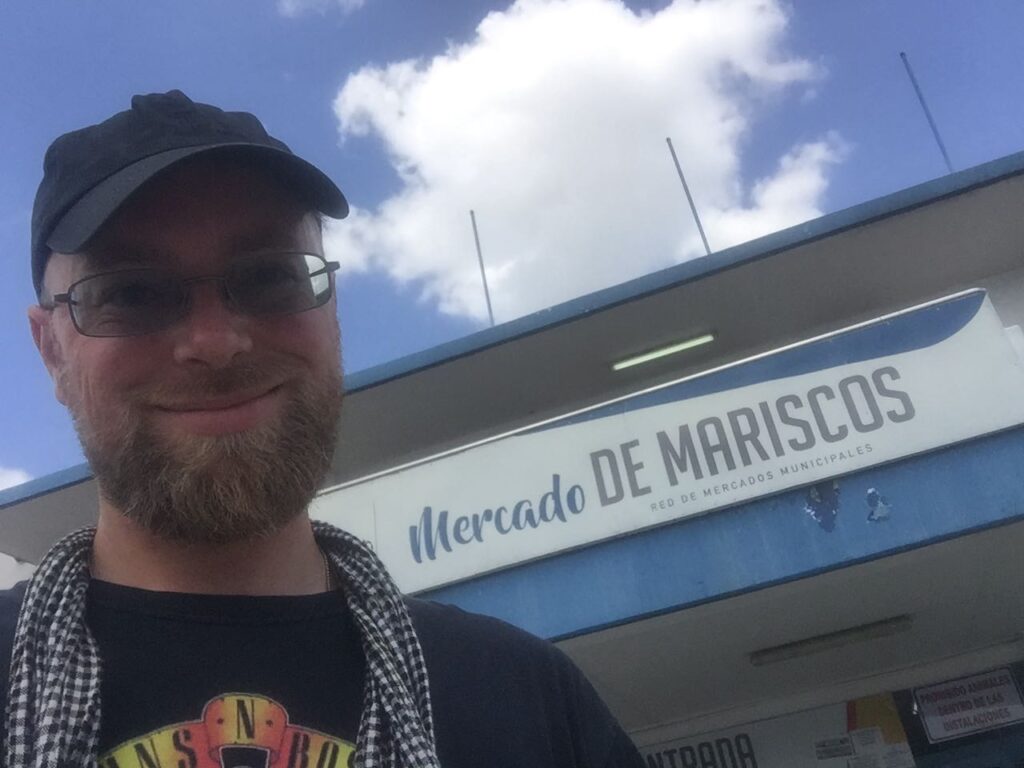
I had my driver take me down to the far side of the Malecon, close to Old Town as I needed to go to a Bourdain-approved spot for lunch. There was a very nice fish market with a bunch of stalls attached to it where I got three different types of ceviche for lunch: Lobster, Sea Bass, and Concha Negra. Before my world travels, I only thought it was the Japanese that did raw seafood. After this deliciousness, I was very glad I was wrong.

I took a slow walk back to the hostel. There was a craft market under an overpass that seemed to be tourist (and tourist price) free. I stopped, looked around, and decided to purchase a few Molas for the women in my life.
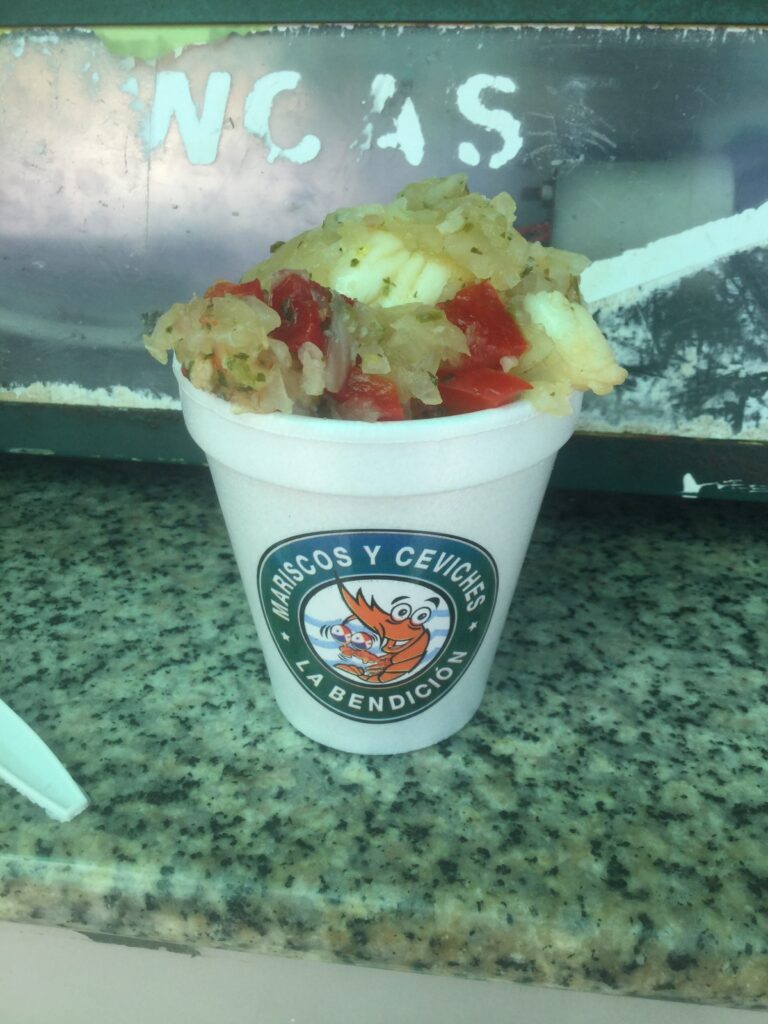
I continued my walk home which was much farther than I realized. The sun was high, the temperature was hot, and I could feel myself overheating from the lack of shade. I miraculously made it back to the hostel. After taking a cold shower to try to bring my core temperature down, I went up to the front desk and asked if it were possible to turn on the A/C in my room an hour and a half before the schedule allowed it. The woman at the front desk said no. I said I was trying not to have heat stroke. She said she did not care. There went the hospitality.
I ended up getting a towel, putting it under the shower to get it wet and cold, then wrapped it around me as I sat on the linoleum floor in my room. I felt a little better after about an hour. I dried off, put on my bed clothes even though it was only around 6:30, made dinner, had a beer, and watched the Best Picture Winning Parasite before going to bed.
Costa Rica, my final country, in the morning.
